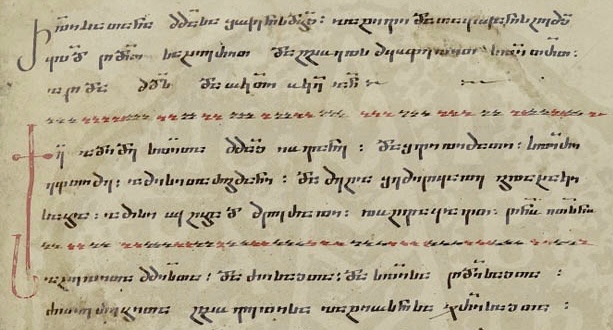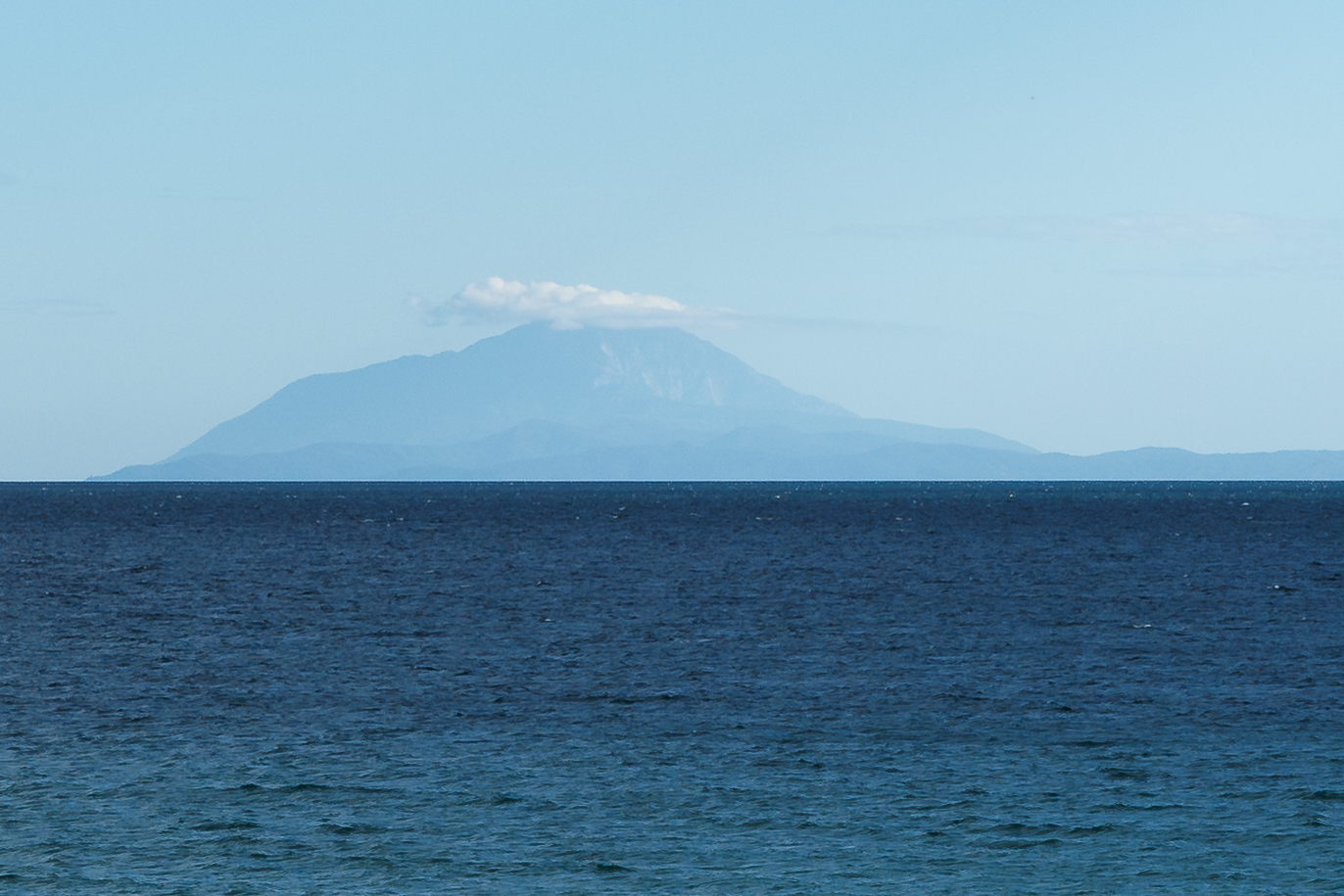|
Iviron
The Monastery of Iviron ( ka, ათონის ივერთა მონასტერი , tr; ) is an Eastern Orthodox monastery in the monastic community of Mount Athos in northern Greece. History The monastery was built under the supervision of two Georgian monks, John the Iberian and John Tornike between AD 980–83 and housed Georgian clergy and priests. It was founded on the site of the former Monastery of Clement. John the Iberian was appointed as the abbot of the newly founded monastery in 980. In 1005, Euthymius the Iberian became the secondary abbot of Iviron Monastery. In Greek, Iviron literally means "of the Iberians The Iberians (, from , ''Iberes'') were an ancient people settled in the eastern and southern coasts of the Iberian Peninsula, at least from the 6th century BC. They are described in Greek and Roman sources (among others, by Hecataeus of Mil ...". The monastery ranks third in the Athonite hierarchy of 20 sovereign monasteries. Notable ... [...More Info...] [...Related Items...] OR: [Wikipedia] [Google] [Baidu] |
John Tornike
John Tornike ( ka, იოანე თორნიკე, tr; ), also known as Tornike Eristavi (; died in 985) was a retired Georgian general and monk who came to be better known as a founder of the formerly Georgian Orthodox Iviron Monastery on Mount Athos in modern-day northeastern Greece. Life Tornike came from a notable Georgian noble family and was in the immediate circles of the ruling dynasty of the Bagrationi. His father, Chordvaneli, had been in the suite of the Georgian prince Ashot II Kuropalates who had paid a visit to the Byzantine emperor Constantine Porphyrogennetos in Constantinople in c. 950. Three of his nephews had military careers and one of them, Varazvache, held a post of ''katepano'' (military governor) of the significant Byzantine eastern outpost Edessa in 1037–8. Tornike served a very successful military and court career (specifically he was ''eristavi'', a Georgian equivalent to ''strategos'') under the Georgian Bagratid dynasty and also gained the ... [...More Info...] [...Related Items...] OR: [Wikipedia] [Google] [Baidu] |
Iviron Monastery
The Monastery of Iviron ( ka, ათონის ივერთა მონასტერი , tr; ) is an Eastern Orthodox monastery in the monastic community of Mount Athos in northern Greece Greece, officially the Hellenic Republic, is a country in Southeast Europe. Located on the southern tip of the Balkan peninsula, it shares land borders with Albania to the northwest, North Macedonia and Bulgaria to the north, and Turkey to th .... History The monastery was built under the supervision of two Georgian monks, John the Iberian and John Tornike between AD 980–83 and housed Georgian clergy and priests. It was founded on the site of the former Monastery of Clement. John the Iberian was appointed as the abbot of the newly founded monastery in 980. In 1005, Euthymius the Iberian became the secondary abbot of Iviron Monastery. In Greek, Iviron literally means "of the Iberians". The monastery ranks third in the Athonite hierarchy of 20 sovereign monasteries. Notab ... [...More Info...] [...Related Items...] OR: [Wikipedia] [Google] [Baidu] |
George Of Athos
George the Hagiorite ( ka, გიორგი მთაწმინდელი) (1009 – 27 June 1065) was a Georgian monk, calligrapher, religious writer, theologian, and translator, who spearheaded the activities of Georgian monastic communities in the Byzantine Empire. His epithets ''Mt'ats'mindeli'' and ''At'oneli'', meaning "of the Holy Mountain" ( Hagiorite) and "of Athos" ( Athonite) respectively, are a reference to his association with the Iviron monastery on Mount Athos, where he served as hegumen. One of the most influential Christian churchmen of medieval Georgia, George acted as an arbitrator and facilitator of cross-cultural engagement between his native country and the Byzantine Empire. He extensively translated the Fathers of the Church, the Psalms, works of exegesis and synaxaria from Greek – some things which had not previously existed in Georgian, revised some others, and improved the translations of one of his predecessors, Euthymius of Athos, to whom (and a ... [...More Info...] [...Related Items...] OR: [Wikipedia] [Google] [Baidu] |
George The Hagiorite
George the Hagiorite ( ka, გიორგი მთაწმინდელი) (1009 – 27 June 1065) was a Georgian monk, calligrapher, religious writer, theologian, and translator, who spearheaded the activities of Georgian monastic communities in the Byzantine Empire. His epithets ''Mt'ats'mindeli'' and ''At'oneli'', meaning "of the Holy Mountain" ( Hagiorite) and "of Athos" ( Athonite) respectively, are a reference to his association with the Iviron monastery on Mount Athos, where he served as hegumen. One of the most influential Christian churchmen of medieval Georgia, George acted as an arbitrator and facilitator of cross-cultural engagement between his native country and the Byzantine Empire. He extensively translated the Fathers of the Church, the Psalms, works of exegesis and synaxaria from Greek – some things which had not previously existed in Georgian, revised some others, and improved the translations of one of his predecessors, Euthymius of Athos, to whom ... [...More Info...] [...Related Items...] OR: [Wikipedia] [Google] [Baidu] |
Monastic Community Of Mount Athos
The monastic community of Mount Athos is an Eastern Orthodox community of monks around Mount Athos, Greece, who hold the status of an autonomous region with its own sovereignty within Greece and the European Union, as well as the combined rights of a decentralized administration, a region, a regional unit and a municipality, with a territory encompassing the distal part of the Athos peninsula including Mount Athos. The bordering proximal part of the peninsula belongs to the regular Aristotelis municipality in Central Macedonia. In modern Greek, the community is commonly referred to as (), translating to 'Holy Mountain', while () is used to denote the physical mountain and () in respect to the peninsula. The community includes 20 monasteries and the settlements on which they depend. The monasteries house around 2,000 Eastern Orthodox monks from Greece and many other countries, including Eastern Orthodox countries such as Serbia, Romania, Moldova, Georgia, Bulgaria, Montenegro ... [...More Info...] [...Related Items...] OR: [Wikipedia] [Google] [Baidu] |
Gabriel The Iberian
Gabriel the Iberian ( ka, გაბრიელ ქართველი, tr) (''fl.'' 10th century) was a Georgian Christian- Orthodox monk from the Iviron Monastery on Mount Athos, who is revered as a saint. His feast day is celebrated by the Georgian Orthodox Church, Greek Orthodox Church on July 12/25 and by the Romanian Orthodox Church on May 13. His name refers to his origins from the Kingdom of Iberia. Life Gabriel became a monk at the Georgian monastery of Iviron on Mount Athos and lived there during the period when the monastic community was led by another Georgian saint, John the Iberian. Gabriel led strictly religious and rough life: he wore clothes made of animal hair, drank only water and remained silent most of the time, avoiding talking about worldly subjects and talking only about spiritual issues and God. Eager for solitude, he retired in the summer to the wild mountains around the monastery, where he lived in a cave, while in winter he would come back to the mon ... [...More Info...] [...Related Items...] OR: [Wikipedia] [Google] [Baidu] |
John The Iberian
John the Iberian ( ka, იოანე მთაწმინდელი; died ) was a Georgian monk, who is venerated as a saint. His name refers to his origins from the Kingdom of the Iberians. Life A member of a Georgian noble family from Tao-Klarjeti in southern Georgia, he was married and served as a military commander. After becoming tonsured as a monk early 960s at the lavra of the Four Churches in Tao-Klarjeti, he became a monk at Mount Olympus (now Uludağ) in Bithynia and then traveled to Constantinople to rescue his son, Euthymius the Illuminator (''Euthymius Opplyseren''). Euthymius had been held as a hostage by the emperor. John and his son attracted many followers, so they both retired to the monastery of Saint Athanasius on Mount Athos. They founded Iviron monastery The Monastery of Iviron ( ka, ათონის ივერთა მონასტერი , tr; ) is an Eastern Orthodox monastery in the monastic community of Mount Athos in northern Greece ... [...More Info...] [...Related Items...] OR: [Wikipedia] [Google] [Baidu] |
Archimandrite Averchie
Archimandrite Averchie or Averkios (1806/1818 – ?; , also or ; ; ), born Atanasie Iaciu Buda (), was an Aromanians, Aromanian monk and schoolteacher. Born in Avdella, he became hegumen and archimandrite in Mount Athos, where he was known as "Averchie the Vlach" (). Averchie was sent to United Principalities of Moldavia and Wallachia, Romania in 1860, where he established contact with several intellectual and political figures. He was the head teacher of a school in Bucharest for Aromanian children whom he and Ioan D. Caragiani had recruited and taken to Romania in 1865 to be educated and become teachers of the first Romanian schools in the Balkans, Romanian schools for Aromanians. Averchie is considered a relevant figure of the early Romanian-backed Aromanian national movement. Biography Averchie (or Averkios) was born in the Aromanians, Aromanian village of Avdella (), then in the Ottoman Empire and now in Greece. Born either in 1806 or 1818, his date of birth is controvers ... [...More Info...] [...Related Items...] OR: [Wikipedia] [Google] [Baidu] |
Euthymius The Iberian
Euthymius the Athonite ( ka, ექვთიმე ათონელი ''Ekvtime Atoneli''; 955–1024) was a Georgian monk, philosopher and scholar, who is venerated as a saint. His feast day in the Orthodox Church is May 13. Euthymius was a Georgian, the ethnonym used by the Byzantines as ''Iberian'', that came from the Kingdom of the Iberians. The son of John the Iberian and nephew of the Tornike Eristavi, Euthymius was taken as a political hostage to Constantinople but was later released and became a monk joining the Great Lavra of Athanasios on Mount Athos. He subsequently became the leader of the Georgian Iviron monastery, which had been founded by his father, and emerged as one of the finest Eastern Christian theologians and scholars of his age. Euthymius labored as abbot of the Iviron Monastery on Mt. Athos for fourteen years before stepping aside to concentrate on his translations. Fluent in Georgian, Greek and other languages, he translated many religious treatise ... [...More Info...] [...Related Items...] OR: [Wikipedia] [Google] [Baidu] |
Mount Athos
Mount Athos (; ) is a mountain on the Athos peninsula in northeastern Greece directly on the Aegean Sea. It is an important center of Eastern Orthodoxy, Eastern Orthodox monasticism. The mountain and most of the Athos peninsula are governed as an Autonomous administrative division, autonomous region in Greece by the monastic community of Mount Athos, which is ecclesiastically under the direct jurisdiction of the Ecumenical Patriarchate of Constantinople, Ecumenical Patriarch of Constantinople. The remainder of the peninsula forms part of the Aristotelis (municipality), Aristotelis municipality. By Greek law and by religious tradition, women are prohibited from entering the area governed by the monastic community. Mount Athos has been inhabited since ancient times and is known for its long Christian presence and historical monastic traditions, which date back to at least 800 AD during the Byzantine Empire, Byzantine era. Because of its long history of religious importance, the ... [...More Info...] [...Related Items...] OR: [Wikipedia] [Google] [Baidu] |
Eastern Orthodoxy
Eastern Orthodoxy, otherwise known as Eastern Orthodox Christianity or Byzantine Christianity, is one of the three main Branches of Christianity, branches of Chalcedonian Christianity, alongside Catholic Church, Catholicism and Protestantism. Like the Pentarchy of the first millennium, the mainstream (or "Canon law of the Eastern Orthodox Church, canonical") Eastern Orthodox Church is Organization of the Eastern Orthodox Church, organised into autocephalous churches independent from each other. In the 21st century, the Organization of the Eastern Orthodox Church#Autocephalous Eastern Orthodox churches, number of mainstream autocephalous churches is seventeen; there also exist Organization of the Eastern Orthodox Church#Unrecognised churches, autocephalous churches unrecognized by those mainstream ones. Autocephalous churches choose their own Primate (bishop), primate. Autocephalous churches can have Ecclesiastical jurisdiction, jurisdiction (authority) over other churches, som ... [...More Info...] [...Related Items...] OR: [Wikipedia] [Google] [Baidu] |


